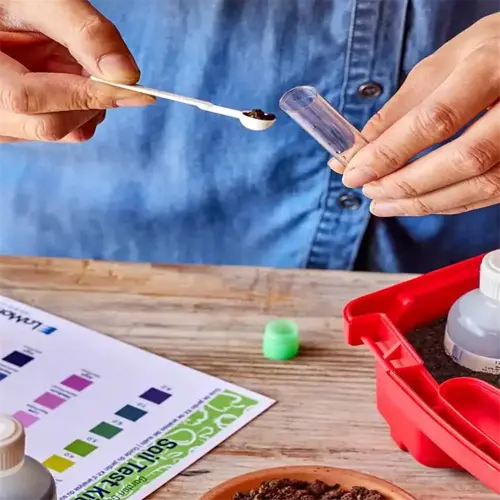How does soil testing prevent diseases?

Written by
Julia Anderson
Reviewed by
Prof. Martin Thorne, Ph.D.Detect plant diseases proactively by beginning underground. A soil test can reveal hidden, exploitable threats before any symptoms occur. I once helped a client save a crop of tomatoes, and it all started with a $25 soil test kit. The tomato was showing symptoms of blossom-end rot, but with soil testing (and then key amendments), they had a probing strategy to "stop the rot."
Nutrient Balance
- Low calcium: Below 1000 ppm increases rot risk
- Excess nitrogen: Promotes soft tissue vulnerable to fungi
- Potassium deficit: Weakens cell walls against pathogens
pH Impact
- <5.5 pH: Unlocks aluminum toxicity (stunts roots)
- >7.5 pH: Locks out iron/manganese
- Ideal range: 6.0-6.8 for most crops
Salinity Control
- >1.4 dS/m: Attracts root-rot organisms
- Sodium buildup: Displaces calcium/magnesium
- Flush schedule: 6-inch water per foot of soil
A soil test taken in the fall at a blueberry farm indicated a pH of 4.8, which helped to explain why the plants had been struggling to grow, even with the use of fertilizer. The pH was raised to 5.5 using the application of pelletized lime and within six months the problem of phytophthora root rot had been reduced by 70%. Regular testing, such as by using a soil test, will keep us from guessing, and as a side benefit, reduced the cost of treatment by 50%.
Testing is warranted after crop failures. A zucchini patch produced 30 percent lower yields last season. The soil report metered out a salinity of 2.3 dS/m which is classified as toxic levels resulting from over-fertilization. Flushing the soil with 8 inches of water and adding gypsum returned the soil to Normal productivity within 10 weeks after that. Make sure you document results to see trends.
Read the full article: Identify Plant Diseases: Detection & Control Guide

